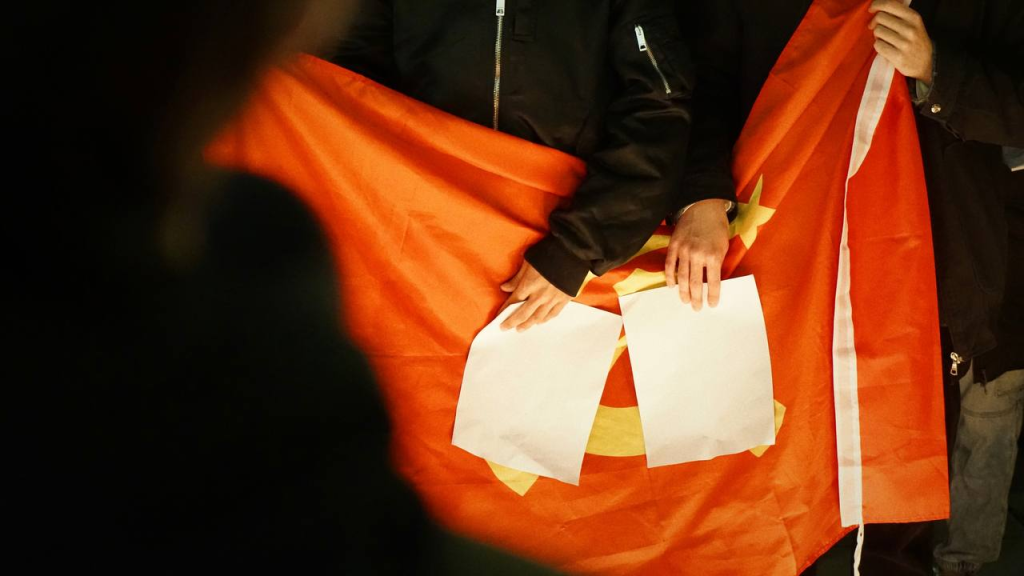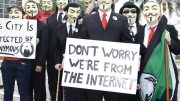“It is all true. It is all real. Nothing here is fake; nothing you see on the show is fake. It is merely controlled.” says Marlon from The Truman Show (Weir, 1998).
The Truman Show demonstrates the relationship between people and platforms and how technology and controllers can hinder people’s expression and perception.
In The Truman Show, the main character, Truman, is a reality show star who lives in a world created and manipulated by a few individuals. All of his relationships and access to information are carefully orchestrated. All the characters and events in the movie other than Truman are manipulated and paid to perform.
It is a microcosm of today’s online society. With the digital transformation and the commercialism of the internet, the idealised cyber utopia no longer seems possible. Instead, there is unlimited regulation and restrictions on the rights and freedoms of online citizens. Governments, platforms, and a few influential people manipulate and regulate the information and actions users are exposed to on the internet. Controllers turn users into Truman by locking them into filter bubbles that may be unconsciously or intentionally created.
On the Web: Users are monitored and restricted in their freedom.
The book convergence culture mentions that information transfer and consumption combine top-down business processes and bottom-up production processes and consumption (Jenkins, 2006, pp. 227-239), like the relationship between Truman and the people in THE control room, Youtuber and YouTube. The control room’s people decide what users watch and what is recommended. Below that, a large group of users co-create the platform through participating media. They are mutually reinforcing and interconnected.
However, in the context of Web 2.0 commercialisation and commodification, the scales have been tilted heavily in favour of the control room.

“web2.0 tag/mind cloud” by ycc2106 is licensed under CC BY-NC-SA 2.0.
A few still produce the new media system and conform to the routines, identities, practices, conventions and representations of the old media system (Carpentier, 2007). This suggests that the emergence of new technologies still follows the mass media paradigm, dominated by a few. It does not lead to a complete “decentralisation” of new media. Instead, it is how new technologies are used that is crucial. Technology can also be designed for more homogenous content, leading to a completely up-down, non-participatory way of using the web, making it impossible to diversify online participation and practices (Carpentier, 2007). In this way, the control room will be more potent in manipulating each of Truman’s tools.
Excessive online censorship will seriously undermine people’s freedom of expression and diversity on social media. This phenomenon is common in China. The government remains the controller of the platforms and networks, and the platforms act as the government’s assistant in setting up systems to constrain user behaviour and rules for strict censorship. Almost all social media in China need to allow real names of users, IP addresses that show users’ location and strict censorship of content (Feng, 2022). Usually, users must agree and follow all the rules to use the platform.
Example: Chinese COVID-19 protest

“Blank pieces of paper obscuring Soviet flag” by LatakiaHill is licensed under CC BY-SA 4.0.
During COVID-19, Chinese COVID-19 protesters played a cat-and-mouse game with internet censors on social media (Hale, 2022). As in the Truman Show, a small number of “Trumans” realise that the world they know is a carefully constructed surface of the powerful, not the whole of the real world. Therefore, they want to climb over the “wall” built by the authoritarian powers to get the freedom of speech they deserve. Chinese netizens use euphemisms and VPN software to access Western social media to express their doubts and dissatisfaction with the Chinese government’s anti-epidemic policies (Hale, 2022). Moreover, the platforms will delete these unfavourable remarks about the country’s harmonious ecology through censorship techniques.
This is a significant blow to the diversity of people’s expressions and perceptions.
Users trapped in filter bubbles
-what is the filter bubble?
Elie Pariser proposed the concept of Filter bubbles in a TED talk. The platform filters the network content through the user’s action track, such as the use preference and browsing history, and personalises the push to the user through the algorithm technology (Eli Pariser, 2011).
Platforms overemphasise the consistency of the user’s browsing content and past behaviour, so the user can only receive specific “guess what you like” or want you to know the content on the network. This “personalised” push objectively leads to the homogenisation of the content viewers receive.
However, this will exacerbate the digital divide and increase the cognitive limitations of the user – making the user a Truman. By trapping platform users in bubbles created by algorithmic personalisation, the engagement gap will widen and access to information will become unequal.
Example: Kuaishou
A social platform focused on marginalised Chinese people, the primary users are from the countryside and generally have a low level of education. At the same time, the emergence of Kuaishou allows the less educated and more marginalised to participate as producers in China’s creative economy (Lin & de Kloet, 2019). It provides grassroots individuals with “incredible” opportunities to become protagonists.
However, Kuaishou, to some extent, undermined social cohesion and exacerbated the digital divide. Instead of providing common interests and topics of concern that allow society to coalesce, Kuaishou users are left in their comfort zone- Truman’s studio.
This is because microcelebrities are also subject to the intervention and guidance of social media platforms. The platforms conduct technical and manual reviews of the content posted by creators for compliance with the platform’s values, which determines the push of web streams (Lin & de Kloet, 2019).
In this process, content determined not to meet the platform’s posting condition guidelines is likely to lose exposure. Whereas in commercialised networks, the value of microcelebrities is determined by several factors, such as the stickiness and interactivity of their followers. This allows microcelebrities to succeed in Kuaishou only by creating homogenised content that meets the platform’s values and audience preferences.
As a result, Kuaishou microcelebrities intentionally display their lower-class identities and behaviours in order to conform to the platform’s and users’ homogenised preferences for “grassrootsness” and “authenticity” (Lin & de Kloet, 2019).
In order to gain empathy and affection from the audience. This leads to users not being allowed to learn about more diverse content due to the platform and can even lead to a more complex digital divide. They are allowing users to solidify and be enclosed in a lower-class bubble.
Conclusion
Undoubtedly, it is almost impossible for a “Truman” living in a control room to wave goodbye like Truman in the movie because the people in the control room have already taken over a considerable part of the users’ lives in real life and have great power.
Therefore, decentralised network governance is the best way to gain freedom of speech and break the filter bubbles deadlock. Only when more organisations, individuals, platforms and governments join together to create a healthy online environment with mutual checks and balanced rights can we realise the relative freedom and authenticity of the online world and its diversity and inclusiveness. This is how we can realise relative freedom, authenticity, and a diverse and inclusive online world.

References
Carpentier, N. (2007). Theoretical frameworks for participatory media. Media Technologies and Democracy in an Enlarged Europe, 105–122.
Eli Pariser. (2011). Beware online “filter bubbles” | eli pariser. In YouTube. https://www.youtube.com/watch?v=B8ofWFx525s
Feng, C. (2022, April 17). Chinese Social Platforms to Display User Locations Based on IP Addresses. South China Morning Post. https://www.scmp.com/tech/big-tech/article/3174487/chinese-social-media-display-user-locations-based-ip-address
Hale, E. (2022, November 28). China’s COVID protestors battle censors to air dissent online. Www.aljazeera.com. https://www.aljazeera.com/economy/2022/11/28/china-netizens-censors-in-cat-and-mouse-game-amid-covid-protests
Hill, L. (2022). 2022 COVID-19 protests in China Blank pieces of paper obscuring Soviet flag at the University of Chicago Urumchi Fire candle light vigil held on Sunday night, November 27, 2022. 50-100 people showed up to give testimony. Blank pieces of paper have been used as a symbol against censorship.
Jenkins, H. (2006). Convergence Culture: Where Old and New Media Collide (pp. 227–239). New York University Press.
Lin, J., & de Kloet, J. (2019). Platformization of the Unlikely Creative Class: Kuaishou and Chinese Digital Cultural Production. Social Media + Society, 5(4), 205630511988343. https://doi.org/10.1177/2056305119883430
Moon. (2023, July 29). The Tragic Tale of The Truman Show. Www.youtube.com. https://www.youtube.com/watch?v=i2mYPyelRng
Primo, D. (n.d.). Web2.0 mindcloud en español. In Flickr.
TED-Ed. (2013). Beware online “filter bubbles” – Eli Pariser. In YouTube. https://www.youtube.com/watch?v=4w48Ip-KPRs
Weir, P. (Director). (1998, June 1). The Truman Show. Paramount Pictures.


